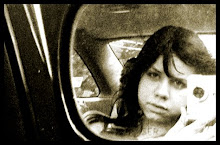Making Comics
Storytelling Secrets of Comics, Manga, and Graphic Novels
by: Scott McCloud
My Boyfriend Tad Lambert insisted I read this book so I went ahead and took his advise... for once. Some of you may know that Tad is an aspiring comic artist, but I had no idea why this book would be of interest for someone like me. Well I'm glad I listened because this book turned out to be yet another great resource that I will probably use again and again!
This book may look intimidating at first... its BIG with lots of pages. I was frightened. But I was relieved when I opened the cover to find the book is written in a comic book format. Very easy to read and definitely supports the messages and lessons of the book.
"Making Comics" thoroughly peels back the layers of story telling, rhythm, formatting, flow, and style that exposes the heart of what comics are made of. These principles can also easily be applied to numerous other art forms such as story boarding, animation, illustration, and character design.
My favorite section of the book was when Scott explains how important body language is when making comics. He talks about how the use of body language can help bridge the gap of the readers senses, since sound is not available. What I found particularly interesting was the insight about what certain poses and gestures really mean, and how to utilize the correct ones to tell your story. He gives clear, detailed explanations of how these poses, gestures, and expressions send information to the reader and how our brains are preconditioned from birth to understand these "signals". There is even a helpful diagram of facial muscles that shows the anatomy behind basic expressions. This is a great chapter alone for anyone interested in animation or illustration.
Other principles from this book that cross over to other mediums are...
-How to set a scene in motion, what you need and don't need to tell the story effectively
-Character design tips
-Perspective tips
-How to communicate different "sensations" without the use of audible sound / words
Of course there is a ton of other information specific to comic artists such as...
-An overview of popular tools of the trade
-How to successfully construct a comic layout
-Some history about the comic book industry
-Comparison of digital tools versus traditional tools
-How to make text appealing
-How text and images interact within the panels
Overall I'd say this book exceeded my expectations. There were some points that I did not find quite as interesting as others, but I suppose that's because I do not classify myself as a comic artist. Though the book has given me some inspiration to try and start a comic... we will see.
And if you are a comic artist then you should definitely pick this up... You'll be glad you did!
8.05.2011
Book Review "Making Comics" by Scott McCloud
Posted by
helloheath on 1:28 PM
Labels: book reviews comic book scott mccloud heather hitchman graphic novels great instruction tutorial
Labels: book reviews comic book scott mccloud heather hitchman graphic novels great instruction tutorial
Subscribe to:
Posts (Atom)





